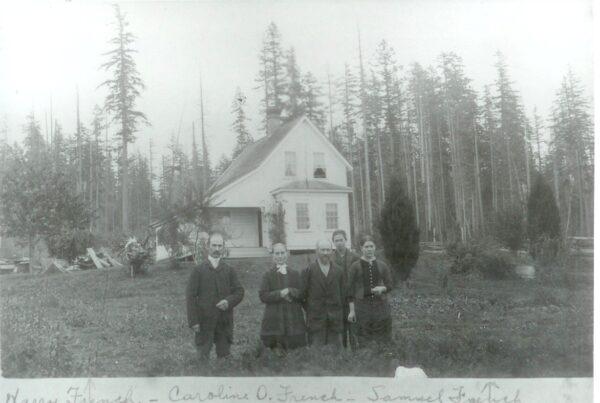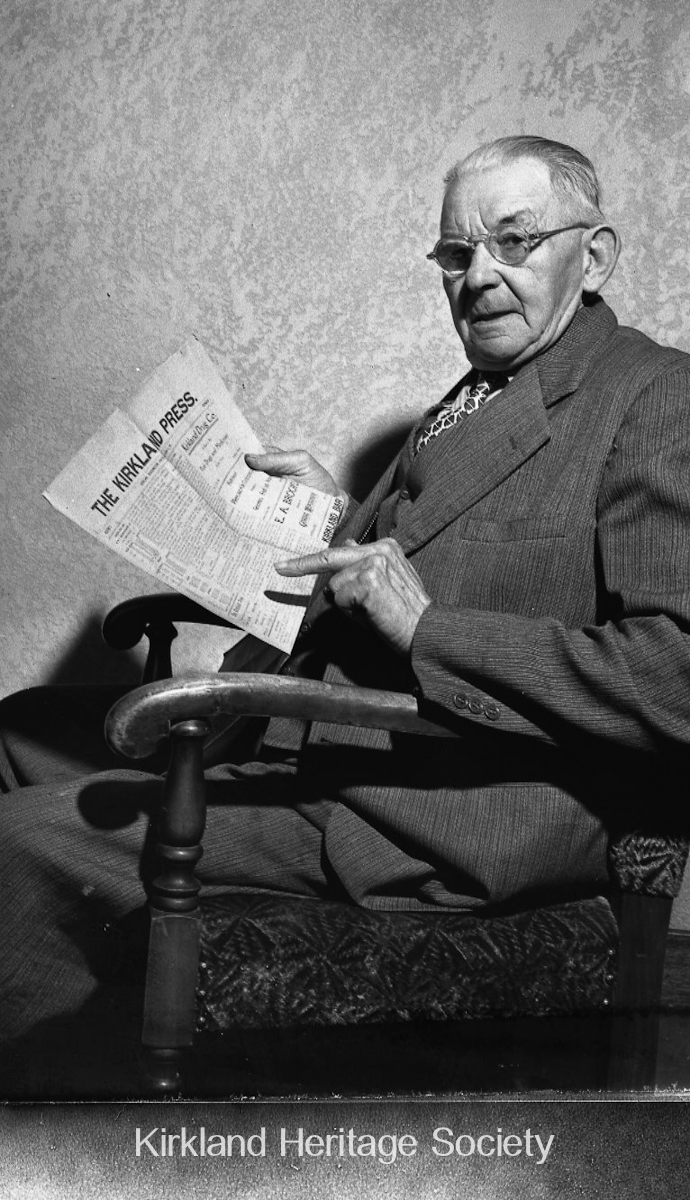In 50 years, Kirkland has grown from humble beginnings to a city of well over 5.000 people.
Peter Kirk had a dream of making Kirkland the Pittsburgh of the West, and although his plans were never realized, residents here in another 50 years may yet be living in a sprawling metropolis linked to Seattle by great floating bridges, just as Oakland is tied to San Francisco by the Bay spans. The tale of the failure of Kirk’s steel mill project, which seemed bright with promise in 1888, is fit material for a novel based on man’s vision and disappointments.
In 1887, L. S. J. Hunt, the publisher of the Seattle Post-Intelligencer, intrigued with the idea of building a huge iron and steel works somewhere in the Puget Sound area, was successful in capturing the interest of Peter Kirk, an English steel manufacturers. Kirk was in the northwest to sell steel rails to the Seattle-Spokane railroad which was then due for construction. Iron and limestone, coupled with large deposits of coal, all the necessary elements for a-large steel works, had been discovered in the Cascades near North Bend.
For two years, Kirk and another English manufacturer, Walter W. Williams, studied and planned the project. The plan was to mine the iron ore in the Snoqualmie Lode, owned by Seattle pioneer M. A. Denny, and ship it to a plant in Kirkland for reduction to steel. Because of the proximity to limestone and coal, it was believed the Kirkland plant could undersell Eastern plants and monopolize the industry on the West coast and in the Far East, where China seemed on the verge of an era of railroad building.
Many Acres Purchased
Publisher Hunt purchased several hundred thousand acres of Kirkland and Ross Hill land from the people who had settled there, and then organized the Kirkland Land and Improvement Company and the Great Western Iron and Steel Company.
During the next four years, the infant town became a beehive of activity. The brick building (still standing at the foot of Market St.) was erected in 1888 to serve as company headquarters. A townsite, named in honor of Kirk, was platted, and a population of forty or fifty thousand people was contemplated. Hundreds of workers were leveling the ground and erecting buildings. A sawmill rose near Forbes Lake to provide lumber for the construction going at a fast rate, and for a planked walk twelve foot wide on Market St. to Juanita.
In- 1890, a great steel foundry and several smaller buildings were built on a’ Rose Hill site, and pits for two blast furnaces were dug. Building materials, machinery including two 1,000 “horsepower engines, and Scotch brick for the blast furnaces came around Cape Horn in sailing vessels. At least $200,000 was spent in setting up the smelting plant. People came, bought lots and built homes, stores and a post office were opened, and schools and churches soon were filled with, people. The Northern Pacific Railroad. Laid a line in from Woodinville Junction, and built several switches to the steel plant and the bunkers.
Venture Publicized
Newspapers publicized the great steel venture and folders were passed in the East; telling how profitable the Kirkland project looked. Capital was subscribed and thousands of dollars, including most of Kirk’s fortune, were poured into the steel plant. Many unscrupulous promoters took advantage of the building boom, platted additions far from the center of town, and reaped a harvest from unsuspecting buyers But, the steel mill which was to have made Kirkland “the Pittsburgh of the West” never produced a single ingot. The expensive machinery brought from England rusted in sheds and was later sold as junk. The severe depression of 1893 had burst the bubble of Kirkland’s prosperity.
Promoters of the steel mill were unable to weather the panic which gripped the nation, and heavy financiers were eliminated. The ore which lay in heavy deposits in the Cascades could not be mined cheaply, and the depression, occurring at such a critical stage in the development of the operation, proved disastrous.
Kirk Disappointed; Leaves
Kirk’s bitter disappointment at the failure of the steel mill probably shortened his life. He sold his home in Kirkland, and moved to his sheep ranch at Friday Harbor in the San Juan Islands where he died in 1917 at the age of 77.
Kirkland was set back for many years by the low blow of the panic, but in 1910 Burke and Farrar, the successors to the holders of the original Kirkland Land and Improvement Company, purchased the land, and the promotion of Kirkland began again. Seattle’s rapid growth, the completion of the canal connecting Puget Sound with Lake Washington, and increased Lake Transportation proved turning points in the tide of Kirkland prosperity, and the steady growth which began then, has never ceased. Kirkland drew city dwellers by the hundreds – people who worked in Seattle by day but who returned at night to a pleasant Lake view home., where they could raise a little garden and a few chickens.
Today, the construction of a second Lade Washington floating bridge in three years promises an even bigger future for Kirkland and the East Side.
Peter Kirk’s vision of a great industrial center on 1888 may not be realized as he had imagined, but it was undoubtedly will one be a reality.



